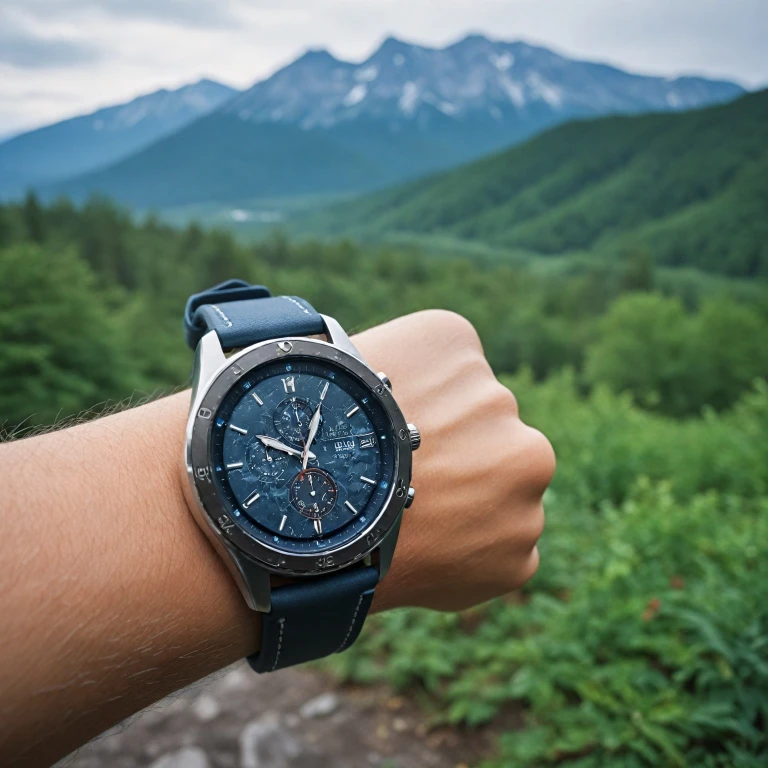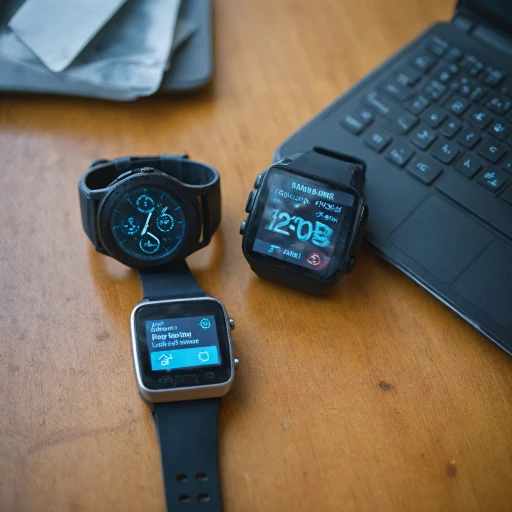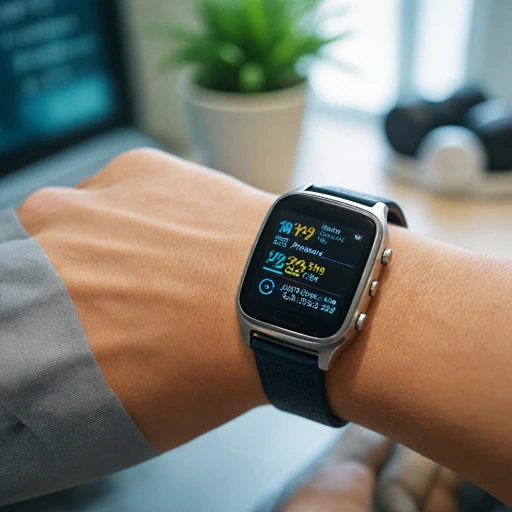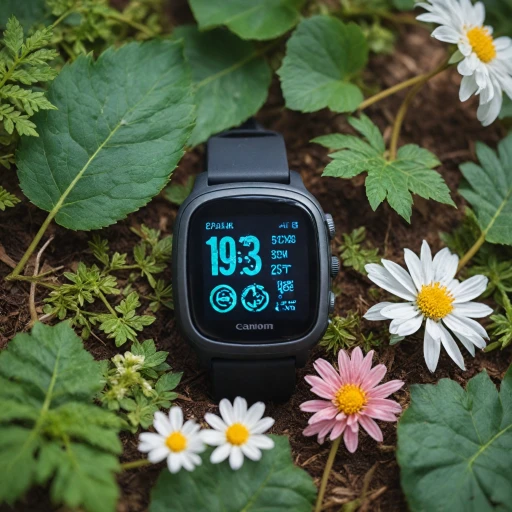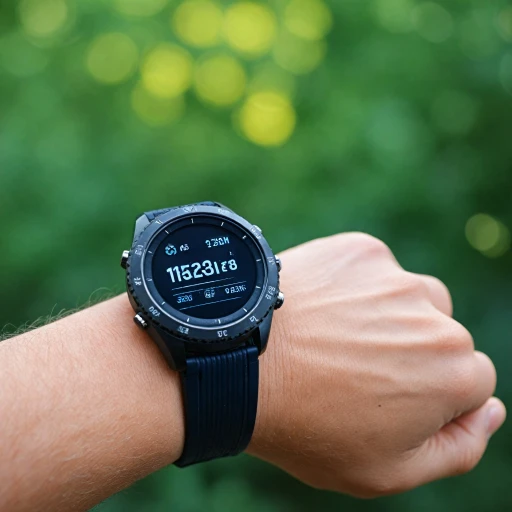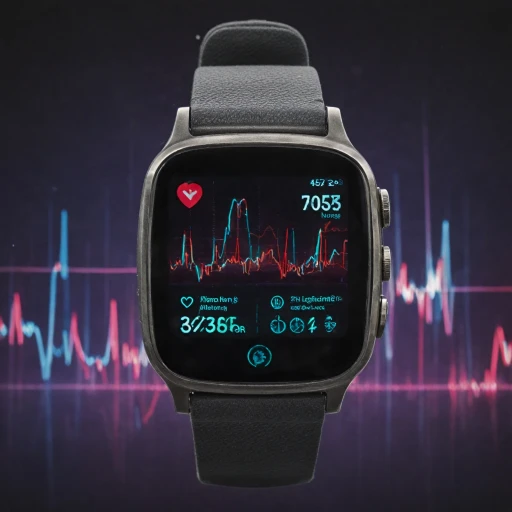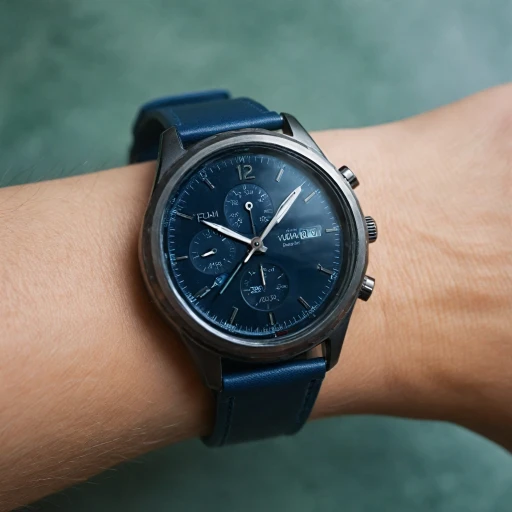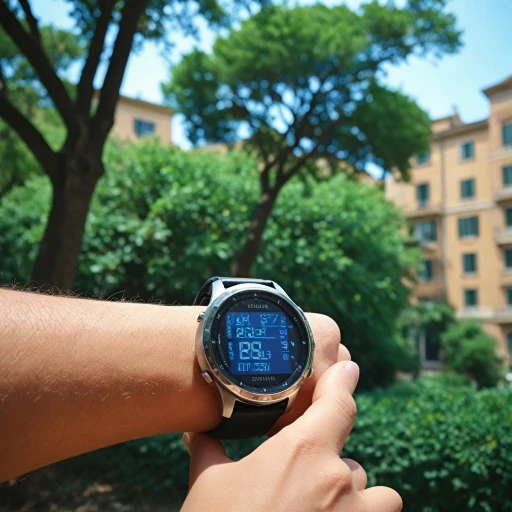
Understanding Built-in GPS in Smartwatches
A Glimpse into the World of GPS-Enabled Smartwatches
In today's rapidly evolving landscape of wearable technology, GPS-enabled smartwatches are at the forefront of innovation. With brands like Apple and Garmin leading the charge, these devices have revolutionized how we track our fitness, monitor health metrics, and navigate our surroundings. But what exactly makes a GPS smartwatch unique, and why are they becoming an essential accessory for both fitness enthusiasts and tech lovers alike?
A watch with built-in GPS provides numerous features that cater to various needs, whether you're a runner, hiker, or someone who enjoys exploring new places. These timepieces come equipped with multiple frequency GPS modes, and you can often find dual band GPS options like the Garmin Forerunner or the Apple Watch Ultra. The integration of multi-band GPS ensures more precise tracking even in challenging terrains, making it an attractive feature for adventurers.
Aside from location tracking, the advanced features of GPS watches are designed to enhance fitness tracking capabilities. With built-in heart rate monitoring, blood oxygen, and even sleep analysis, these devices offer a comprehensive overview of your overall health and wellness. Moreover, some smartwatches, like the Garmin Fenix, also provide solar charging options, extending the battery life beyond the standard days of battery that most devices offer.
When choosing the right GPS smartwatch for your needs, considerations like durability, display type, and available modes play a crucial role. For instance, watches with an AMOLED display typically offer vibrant visuals but may have shorter hours of battery life compared to those with other display types. Titanium-constructed models boast enhanced durability, ideal for rugged sports or outdoor activities.
Understanding these elements helps inform the decision-making process when selecting the best smartwatch for you, ensuring a well-rounded and efficient experience tailored to your needs. As GPS technology continues to advance, the line between luxury and functionality blurs, making smartwatches not just tech gadgets, but indispensable tools in our daily lives.
Benefits of Built-in GPS for Fitness Enthusiasts
Maximizing Your Fitness Potential with Built-in GPS
Smartwatches equipped with built-in GPS have become a game-changer for fitness enthusiasts. The integration of GPS technology allows users to accurately track their workouts, whether they are running, cycling, or engaging in other outdoor activities, without the need to carry a smartphone. This convenience is a major draw for those seeking to streamline their exercise routines. The precise GPS tracking helps in mapping out routes and providing real-time statistics on distance, pace, and elevation. This data is crucial for athletes aiming to improve their performance or for recreational users who want to better understand their physical capabilities. Additionally, many GPS smartwatches, like the Garmin Forerunner and Garmin Fenix series, offer features that are specifically tailored for different sports, enhancing their appeal for diverse activities. Moreover, these GPS watches often come with built-in fitness tracking capabilities, such as heart rate monitoring, sleep analysis, and even blood oxygen measurement. These features contribute to a comprehensive health overview, making it easier to tailor fitness regimes to individual needs. For those interested in a more specialized fitness focus, such as swimming, exploring the benefits of the Garmin Swim 2 can be particularly insightful. When considering a GPS smartwatch for fitness, battery life is also a critical factor. Models like the Apple Watch Ultra and the Garmin Fenix incorporate advanced battery-saving modes, which can extend usage from mere hours to several days without a recharge, depending on the GPS frequency and usage patterns. Some devices even offer solar charging options, ensuring that your watch remains functional during extended outdoor activities. Selecting the best GPS smartwatch hinges on a variety of factors, including the display type (such as AMOLED), the preferred activity mode, and even materials like titanium for durability. For golfers, finding the right golf watch that blends GPS precision with sport-specific tracking can significantly enhance performance. Consider visiting this guide on choosing the right golf watch to explore more tailored solutions. Overall, the inclusion of advanced GPS technology in smartwatches stands as a cornerstone for fitness enthusiasts, offering a sleek and practical way to elevate their workout experience.Navigation and Travel Assistance
Effortless Navigation and Reliable Travel Assistance
Smartwatches with built-in GPS provide users with effortless navigation capabilities, making them invaluable companions during travel or exploration. Major brands, such as Garmin and Apple, equip their devices with advanced GPS technologies that cater to varied travel needs, from city wanderings to adventurous trails. The ability of a smartwatch GPS to offer accurate directions transforms the device from a simple timekeeper to a sophisticated navigator. As users venture out on trips or daily commutes, the GPS feature ensures they remain on track without the need of peering into cumbersome maps or smartphones. By keeping the routes integrated with the watch display, users can enjoy hands-free travel experiences—an example of this convenience can be observed in models featuring an AMOLED display, which enhances visibility of maps and routes, even in low light conditions. For trail enthusiasts or cyclists, technology integrated in devices like the Garmin Forerunner and Garmin Fenix offers a dual-frequency GPS system, which ensures reliable tracking in the complex terrains where single-frequency GPS might falter. The multi-band GPS also guarantees regular updates on geographical positioning, allowing users to enjoy a significant upgrade in precision when planning their activities. Traveling in style, some smartwatches designed for lifestyle enthusiasts come built with titanium cases, not only enhancing durability but also adding a touch of elegance. GPS watches also provide the functionality to switch seamlessly between modes such as smartwatch mode, facilitating extended days of use on a single charge. However, switching modes can affect battery life, which is a critical consideration for travelers aiming for the best experiences on prolonged trips. In addition, smartwatches expand their capabilities by incorporating health-tracking features and offering heart rate monitoring and sleep optimization. These watches ensure wearers maintain their health and wellness goals during journeys. You can learn more about enhancing sleep during travel with devices like the Apple Watch here. With advancements in solar charging and power-efficient CPUs, many devices can offer longer hours—or even days—battery life, further minimizing concerns about device power during extended travel. Whether for fitness, lifestyle, or sheer adventure pursuit, a GPS-enabled smartwatch is the quintessential tool for the modern traveler, making each journey both memorable and manageable."Battery Life Considerations
Evaluating Battery Life in GPS Smartwatches
When it comes to GPS smartwatches, battery life is often a key consideration that influences purchasing decisions. The integration of GPS features, while offering incredible functionality, can significantly impact the battery capacity of a smartwatch. Particularly for fitness enthusiasts and travelers, the duration for which the GPS can function on a single charge is crucial. Different smartwatch models offer varying battery life performances, depending on usage modes. For instance, models like the Apple Watch and other popular fitness-focused watches provide relatively short periods of GPS usage compared to others such as the Garmin Fenix and Garmin Forerunner, which are designed to offer extended usage hours in GPS mode. Modern GPS smartwatches utilize innovative features to optimize battery longevity. One such technology is the inclusion of solar charging capabilities in devices like the Garmin Instinct Solar. These smartwatches convert sunlight into energy to extend battery life, making them suitable for outdoor activities and extended use. Another advancement is the implementation of dual frequency and multi-band GPS, which reduces power consumption while maintaining accurate tracking. The display type also impacts the overall power efficiency. AMOLED displays, while offering vibrant visuals and an always-on display option, tend to consume more battery compared to traditional low-power screens. As a result, manufacturers have introduced different smartwatch modes to balance between performance and power-saving needs. Switching to a smartwatch mode or ultra battery-saving mode can extend the device’s usage for days when GPS tracking is not actively required. Choosing the right GPS smartwatch ultimately depends on your lifestyle and activity level. Whether it's for health tracking, fitness enthusiasts, or navigation, evaluating battery performance remains essential to ensuring the smartwatch meets your needs without frequent charging interruptions. The review of the best options available can guide users in selecting a GPS watch that aligns with their expectations for battery life.Privacy and Security Concerns
Balancing Security and Convenience in GPS Smartwatches
The integration of GPS technology in smartwatches, while offering numerous benefits like fitness tracking and navigation, also brings with it considerations related to privacy and security. As you wear your GPS-enabled smartwatch, such as a Garmin or an Apple Watch, it continually accumulates location data, heart rate details, and health metrics. With the advancement of these features, users must be aware of potential security threats and privacy risks.- Data Privacy: Your GPS smartwatch is constantly collecting and transmitting data, which could potentially expose sensitive information if not properly secured. Always opt for watches that offer robust encryption methods and regularly update the device's software to guard against vulnerabilities.
- Permission Management: It's essential to manage which apps and services have access to your GPS and health data. Make sure to review the permissions within your smartwatch's settings regularly and enable permissions only when necessary to reduce the risk of data misuse.
- Device Security Features: Modern smartwatches, including those with AMOLED display and titanium builds, often include features such as biometric authentication or PIN codes to prevent unauthorized access. Utilizing these security measures enhances the protection of personal data.
- Understanding Technology Limits: While dual-frequency and multi-band GPS technologies enhance tracking accuracy, they also transmit more data, which could be targeted by cyber threats. Staying informed about how these technologies work in your smartwatch model, like the Garmin Forerunner or Fenix, helps you understand what precautions are necessary.
Future Trends in GPS Technology for Smartwatches
Emerging Trends Shaping GPS Technology in Smartwatches
The evolution of GPS technology in smartwatches is driving exciting advancements in functionality and efficiency. Innovations are set to enhance user experience, particularly as it pertains to fitness tracking and day-to-day navigation.
Firstly, there is a strong push towards integrating dual frequency GPS capabilities, enabling devices like the Garmin Fenix and Apple Watch Ultra to provide more accurate and reliable location data. This is particularly beneficial for outdoor fitness enthusiasts who require precise tracking in diverse environmental conditions.
In addition to dual frequency, the emergence of multi band GPS features allows for improved accuracy in navigation. This technology is promising for urban environments, where interference from tall buildings can often disrupt signal reception.
Battery life, a concern addressed earlier, continues to improve with the introduction of solar charging technology. Devices with this feature, like some models in the Garmin Forerunner series, are extending the time between charges, favorably impacting overall watch mode utilization.
The move towards more sustainable and efficient battery life solutions is evident with brands actively seeking ways to optimize energy consumption without sacrificing performance. The introduction of smartwatch mode and power-saving options ensures that GPS usage is balanced with other smartwatch functions, maximizing operational hours across multiple days.
Security and privacy are becoming prioritized aspects, as discussed before, with enhancements in data encryption techniques and secure location tracking software, which aim to protect users’ sensitive information.
Finally, as health monitoring assumes greater importance, there is an increased focus on integrating GPS data with metrics like heart rate, blood oxygen, and sleep patterns. This integration not only aids in comprehensive fitness tracking but also enhances users' overall health monitoring capabilities.
With continuous technological improvements and greater adoption of titanium and amoled display materials, the future of GPS smartwatches promises a blend of durability, style, and sophisticated functionality, setting a new standard for what to expect from your favorite gps watch.
